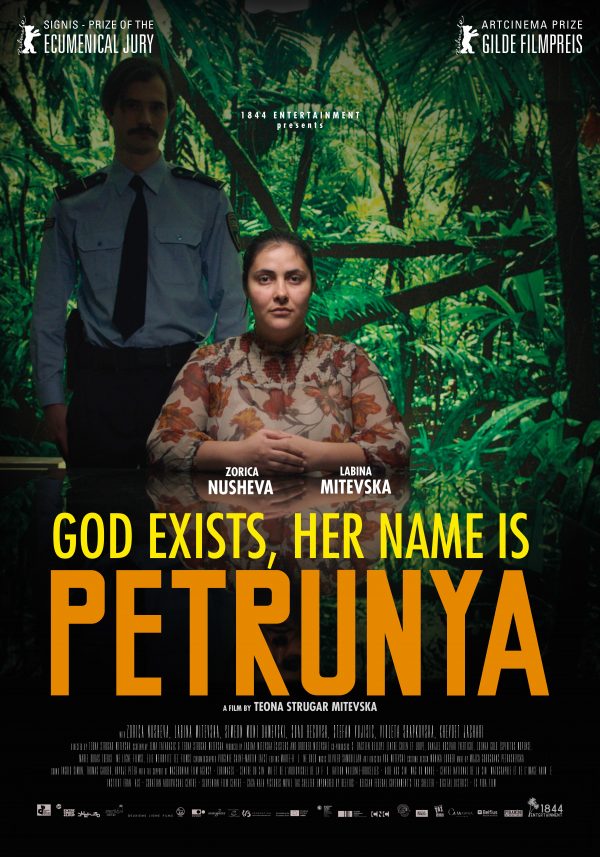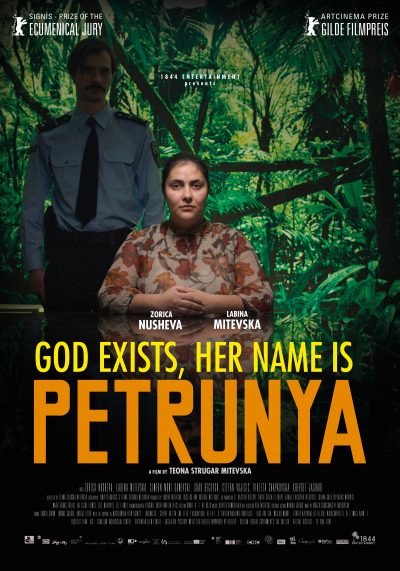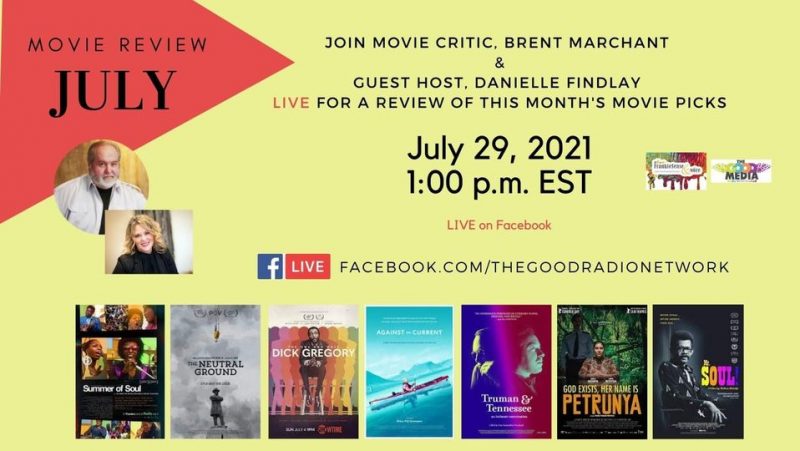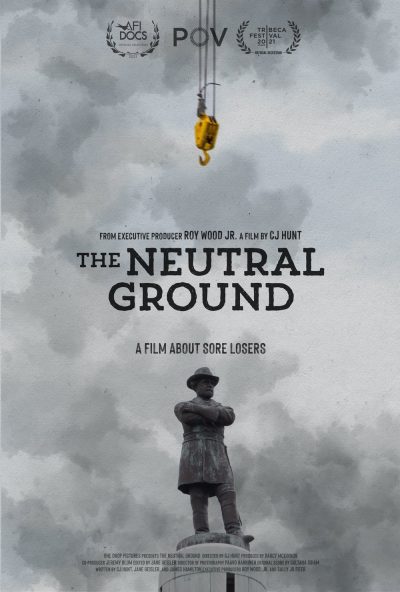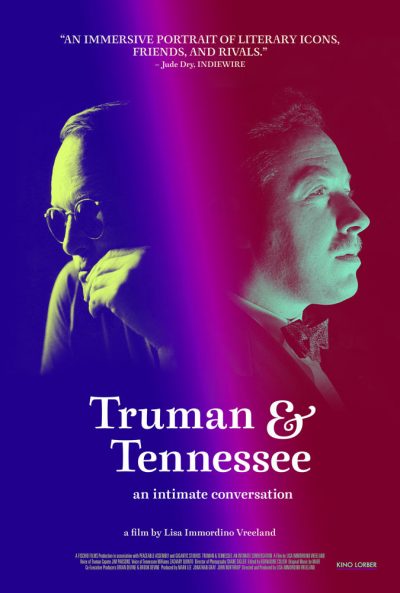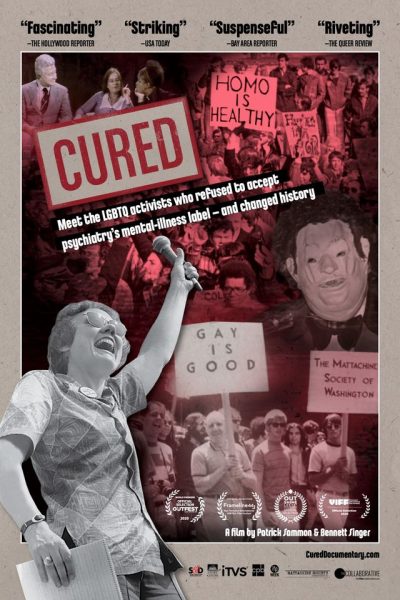“The One and Only Dick Gregory” (2021). Cast: Interviews: Chris Rick, Kevin Hart, Dave Chappelle, Harry Belafonte, Wanda Sykes, Nick Cannon, Lena Waithe, W. Kamau Bell, Rob Schneider, Lillian Gregory, Christian Gregory, Ayanna Gregory, Greg Gregory, Myrlie Evers-Williams, Robert Lipsyte, Edward Schmitt, Sheila Moses, Steve Jaffe, Lawrence O’Donnell, Rock Newman, Cathy Hughes, Jack Healy, John Bellamy, Gordon Brooks, Joe Madison. Archive Footage: Dick Gregory, Medgar Evers, Dr. Martin Luther King Jr., Merv Griffin, Jack Paar, Mike Wallace, David Frost, Ed Bradley, Arsenio Hall, Hugh Hefner, J. Edgar Hoover, Muhammed Ali, Michael Jackson, John Lennon, Yoko Ono. Director: Andre Gaines. Screenplay: Andre Gaines. Web site. Trailer.
Living one’s truth is indeed a virtue – and one that some say is becoming increasingly rare in these contentious times. It’s unclear whether this is due to an unwillingness or an inability to do so. Either way, though, if we’re to revive this practice, we need inspiring examples to draw from, and, these days that means looking to our past to find suitable role models to help show us the way. So it is in the superb new biographical documentary, “The One and Only Dick Gregory.”
When a film’s title claims to be about “the one and only” Dick Gregory, it’s not exaggerating, particularly when it comes to the character and magnitude of its subject. The St. Louis-born African-American comedian, social activist and health advocate lived quite a life, one unlike anyone who came before or after him during his 84 years (1932-2017). He may have come from a poor background, but he certainly made the most of what he had to work with, as this new documentary so eloquently shows.
Gregory came to prominence as a comedian in Chicago in 1961 with a breakthrough performance at the Playboy Club. Ironically, this was a stint where he was named a last-minute replacement for another comic. He made quite an impression with his pointed, racially focused humor, delivered through a routine presented to an audience of mostly White Southerners in the Windy City for a convention. Gregory became an overnight sensation, quickly rising through the ranks of the entertainment world and landing spots on television programs like The Jack Paar Show, not an easy feat for Black performers of any stripe at the time. But Gregory’s incisive humor, his smooth delivery and his cool demeanor made him a stand-out, possessing a combination of qualities that separated him from other African-American comics of the time.
Gregory’s success soared, becoming one of the most in-demand performers of his day. And that prominence earned him a respectability few Black entertainers enjoyed at the time. It would subsequently enable him to embark upon undertakings far different from his night club appearances and TV gigs, ventures that made an impact more significant and meaningful than anyone might have realized, including the comic himself.
With the rise of the civil rights movement, and in light of the ongoing discrimination inflicted upon minorities in places like the American South, Gregory could not stay silent. His routines were often punctuated by racially based humor, so he was certainly no stranger to controversial material. Now, however, he saw an opportunity to make use of his comedy as a way to get the public’s attention with regard to civil rights issues. Getting people laughing about sensitive topics was a way to getting their ear. And, given his success as an entertainer, he had built up considerable clout, a reputation that carried tremendous weight in helping to influence and reshape the public debate about these charged social issues.
As time passed, however, Gregory did more than just tell jokes. He became an activist, working side by side with civil rights leaders like Medgar Evers and Dr. Martin Luther King Jr. He and his family became actively involved in protests, an effort that resulted in more than 100 arrests and jail time. But Gregory was not about to just pay lip service to these issues; he saw a need to become a participant in these initiatives, and he never backed down, freely giving his time and money to the cause.
Gregory’s efforts did not stop with securing rights for the Black community, either. According to his daughter Ayanna, he also participated in protests focused on the rights of women, Native Americans and even poor Whites. He saw injustice and wanted to see it eliminated. This also became apparent in his vocal criticism of the highly unpopular Vietnam War, which was taking a disproportionate toll on the African-American community. When it came to matters like these, he simply couldn’t remain silent.
Gregory was skillful at courting support, too. For example, when the entertainment industry became leery of booking him because of his increasingly controversial stances, he actively sought out audiences where he knew he would be warmly welcomed, most notably college campuses, which were growing progressively more restless with an unsatisfactory status quo. He became one of the nation’s most in-demand guest lecturers at universities, where he often gave long and engaging presentations, punctuated by his singular sense of humor.
But, even with his success on college campuses, Gregory saw the need to generate more publicity for his views. To compensate for this, he sought inventive ways to generate attention, such as going on prolonged fasts and engaging in long-distance runs. When questioned why he undertook these seemingly unconventional pursuits, he said that, if people asked him about them, it opened the door for him to explain himself, thereby drawing attention to the reasons behind these activities. The strategy worked, garnering considerable media coverage and earning him a reputation that transcended his success as an entertainer. He was now becoming equally known as an emerging social activist.
In the wake of his fasts and long-distance runs, Gregory’s physique significantly changed. Having been a 288-pound chain smoker, he shed a tremendous amount of weight and quit his four-packs-a-day habit. He also became a vegetarian and then a vegan, radically transforming his diet. And, as a result of this makeover, he saw the critical (and thereunto previously underappreciated) role that health and well-being played in personal empowerment, both individually and as members of society. Gregory saw that poor diets and inadequate health care reinforced the disempowerment that plagued minority communities, so he subsequently became an ardent advocate for change in these areas. He became the developer and spokesperson for a proprietary product known as the Bahamian Diet, one that became wildly successful and made him millions.
But, as the film notes, as successful as Gregory was as an entertainer, activist and health advocate, he also left much to be desired as a businessman. As abundantly as the money came in, it went out nearly as quickly, much of it donated to favorite causes and some of it caught up in protracted legal battles with business associates. Before long, Gregory found himself so destitute that he lost his home and could no longer afford health insurance for himself and his family. However, as he so philosophically observed, he came from nothing and wasn’t preoccupied with amassing wealth, believing that whatever money he earned should be put to use and not sat on.
This change in fortune pushed Gregory back into doing what got him started – entertaining. He began giving club performances and making appearances on TV shows and in films like “The Hot Chick” (2002) with comedian Rob Schneider. But, in the process, he never lost sight of his activism, either, frequently appearing on televised political forums, such as those broadcast on C-SPAN, where his outspoken rants often overshadowed other more staid guests. Indeed, as a vocal senior, Gregory didn’t hesitate to speak his mind, frequently pontificating with an uncharacteristically raw approach, one far different from the smooth delivery of his early days in show business. But, as his days dwindled and his health began to slide, he needed to make his points while he still had the chance. He may have been more in-your-face than he was at one time, but he wanted to make sure people knew how he felt, especially when it came to addressing subjects that hadn’t undergone the degree of reform he believed necessary with the passage of nearly six decades.
When Gregory passed away somewhat unexpectedly in 2017, he left quite a legacy on multiple fronts. Indeed, there was one and only Dick Gregory, but that shouldn’t come as any surprise. After all, considering everything he accomplished, that would truly be a hard act to follow.
One could make a good argument that finding individuals who live their truth and abide by the principles of personal integrity is becoming harder than ever these days. Some would say this is especially true in the entertainment business, where celebrities step forward to make stirring speeches for certain causes and then retreat into the wealth and privilege their careers have provided them. But Dick Gregory was different (hence the “one and only” designation). He held firm to his beliefs and made sure he translated them into actions, a hallmark practice of the conscious creation process, the philosophy that maintains we draw on their power and veracity to manifest the reality we experience. Gregory may not have ever heard of this philosophy, but he surely was a master of its principles in all he did.
What’s particularly inspiring about how Gregory lived his life is that his personal confidence in himself seemed to keep growing and expanding throughout his life. Even if there was something he hoped to accomplish but did not know how, he went and learned about it, steeled himself in his convictions and then made it happen. His beliefs in his abilities for accomplishing even the seemingly impossible were continually strengthened and imbued with so much resolve that he rarely missed the mark when it came to fulfilling his aspirations. That’s conscious creation in action, to be sure.
Gregory was also adept at forging alliances and partnerships in his endeavors, finding collaborators who were on the same page as he was in undertaking meaningful acts of co-creation. He tapped partners who could help him, such as boxer Muhammed Ali, who helped draw attention to one of Gregory’s long-distance runs and the reasons for it. He also joined forces with those who had common interests, such as singer Michael Jackson, who collaborated with Gregory in helping to fight hunger. And then there were times when Gregory volunteered to help others with their personal and public ventures, such as former Beatle John Lennon and his wife Yoko Ono, who called upon Gregory to help them kick their drug habits. In each case, the beliefs were in place, and the results spoke for themselves.
In examining the many facets of Gregory’s life, some might wonder how the diverse dots of his existence connected. How did a successful comedian become a fervent social activist and then an advocate for healthy living? It comes down to an ability to spot the connections that bind these diverse and seemingly disparate pursuits. Given that conscious creation maintains that everything in existence is intrinsically linked to everything else, there are indeed threads that join seemingly unrelated manifestations, even if they’re not easy to spot. But, for those like Gregory, who possess an uncanny ability to identify them, recognizing the connections is the first step in drawing upon their power and then being able to tap into them. Seeing, in this case, truly is believing, and believing is the trigger for acting and creating. Gregory’s success as an entertainer, for instance, was a starting point for working his magic, earning him the respectability and influence that made it possible for him to go after his other pursuits and become successful at fulfilling his aims in those areas. A little awareness, backed by complementary convictions, can indeed work wonders.
Gregory achieved more in his lifetime than many individuals do in multiple incarnations. He felt compelled to accomplish the goals he set out to do, often at great personal costs. But, then, given his upbringing, he knew the conditions that his fellow minorities were experiencing and was willing to go to bat for improving their well-being socially and politically, as well as when it came to their health. On some level, he must have seen this as his destiny, working as a champion for the betterment of others, a practice that conscious creators know as value fulfillment. Gregory truly lived his version of it and sought to inspire others through his example.
Gregory lived quite an amazing life, as depicted in this detailed new biography. With a wealth of archive footage of Gregory’s standup performances, his civil rights activism, his efforts to promote healthier living, and media appearances with the likes of Mike Wallace, Ed Bradley, David Frost, Arsenio Hall, Merv Griffin and Jack Paar, director Andre Gaines’s debut feature presents an in-depth look at this prescient icon’s fascinating life story. In addition to appearances by Gregory’s wife Lillian, his children Christian, Ayanna and Greg, and his friends and fellow activists, as well as his publicist, biographer and business partner, the film includes insightful conversations with those whom he inspired, including actor Harry Belafonte and comedians Chris Rock, Dave Chappelle, Kevin Hart, Wanda Sykes, Rob Schneider and Nick Cannon. While the picture provides a thorough treatment of Gregory’s activism, it nevertheless could have placed a little more emphasis on his comedy, given that the clout he built up as a successful entertainer was what made his later, more meaningful work possible. That aside, however, this excellent offering provides viewers with a fitting tribute to a remarkable talent and an impressive human being who brought true meaning to the word – and practice of– integrity. The film is currently playing on the Showtime cable TV network and its streaming site.
When we come to the ends of our lives and all is said and done, how many of us will be able to look back upon our times and say that we accomplished what we set out to do? What’s more, even if our goals have been achieved, how many of us will be able to claim that we reached them in line with integrity, reflecting the true intents we began with? It is possible, provided we stick to our beliefs and see them through. Dick Gregory did that, and his accomplishments serve as a shining example to the rest of us. And that’s no laughing matter.
Copyright © 2021, by Brent Marchant. All rights reserved.

